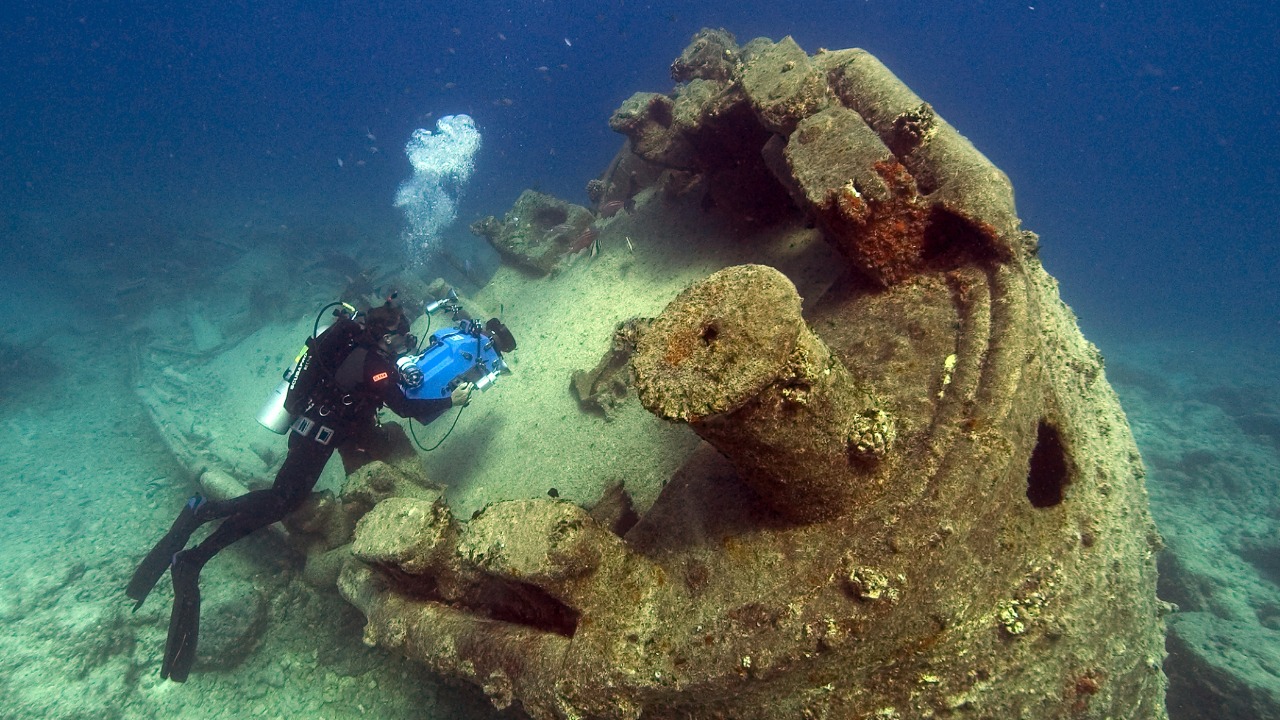
The recent discovery of an ancient shipwreck’s cargo has illuminated Iron Age trade networks and revealed a previously lost Mediterranean seaport, challenging long-held assumptions about ancient maritime commerce. This find is part of a broader revelation involving three ancient shipwrecks, dubbed the “Ghost Fleet of the Iron Age,” which collectively rewrite the narrative of Mediterranean seafaring during that era. These artifacts underscore the sophistication of Iron Age navigation and economic exchanges across the region.
Discovery of the Shipwrecks
The initial uncovering of the primary shipwreck and its cargo has provided a remarkable glimpse into Iron Age trade. The artifacts, remarkably preserved underwater, were excavated using advanced techniques designed to maintain their historical integrity. According to Discover Magazine, these methods included careful underwater excavation and the use of specialized equipment to handle fragile items. The shipwreck’s location and the state of its cargo have offered unprecedented insights into the trade practices of the time.
The identification of the three shipwrecks as a cohesive “Ghost Fleet” has been a significant breakthrough. Located at various points in the Mediterranean, these shipwrecks were discovered through the use of sonar technology and diving operations, as reported by ArkeoNews. This technological advancement allowed researchers to map the seabed and identify the wrecks’ positions, leading to their joint discovery. The timeline of these finds, dating back to the Iron Age, has prompted immediate scholarly analysis to understand their historical context.
These shipwrecks, dating to the Iron Age, surfaced during recent explorations and have sparked significant academic interest. As noted by Phys.org, the discovery timeline highlights the importance of these wrecks in understanding the era’s maritime history. The artifacts found within these shipwrecks are not only valuable for their historical significance but also for the light they shed on the trade routes and economic exchanges of the time.
Cargo Analysis and Trade Insights
The cargo from the main shipwreck includes goods that are indicative of long-distance trade, revealing connections between Mediterranean cultures during the Iron Age. According to Discover Magazine, these items include pottery, metals, and other trade goods that suggest a complex network of economic exchanges. This cargo provides concrete evidence of the interconnectedness of Mediterranean societies and their reliance on maritime trade.
The combined cargoes from the three shipwrecks demonstrate evolving Iron Age trade patterns, including the exchange of materials previously undocumented in historical records. As detailed by Phys.org, these findings challenge existing historical models by revealing new trade routes and connections. The presence of diverse goods from different regions underscores the complexity and reach of Iron Age trade networks.
Experts interpret the cargo’s composition as evidence of a more interconnected economy than earlier models suggested. The analysis provided by ArkeoNews highlights how these findings reshape our understanding of economic interactions during the Iron Age. The diversity of the cargo suggests that Mediterranean cultures were engaged in extensive trade, facilitating cultural and technological exchanges across vast distances.
The Lost Seaport Revelation
The evidence from the shipwreck cargo points to the existence of a forgotten Mediterranean seaport, providing navigational clues and trade route implications tied to its location. As reported by Discover Magazine, the artifacts suggest the presence of a significant trading hub that played a crucial role in Iron Age commerce. This revelation challenges previous assumptions about the region’s coastal infrastructure and trade dynamics.
The identification of this seaport reshapes understandings of Iron Age coastal infrastructure, with potential sites being considered based on the wreck positions and historical geography. According to Phys.org, this discovery has prompted a reevaluation of historical maps and trade routes, suggesting that this seaport was a vital node in the Mediterranean trade network. The implications for historical geography are profound, as they offer new insights into the organization and operation of ancient trade systems.
The broader archaeological significance of this lost seaport includes its role as a hub for the “Ghost Fleet” activities and calls for further surveys. As noted by ArkeoNews, the seaport’s discovery has sparked interest in conducting more detailed archaeological surveys to uncover additional evidence of its existence and function. This could lead to a deeper understanding of the economic and cultural exchanges that defined the Iron Age Mediterranean.
Implications for Mediterranean Seafaring
The shipwrecks challenge prior narratives of Iron Age seafaring, detailing advancements in shipbuilding and navigation inferred from their construction and routes. As highlighted by ArkeoNews, these findings suggest that ancient mariners possessed sophisticated knowledge of ship design and navigation techniques. This challenges the traditional view of Iron Age seafaring as rudimentary and highlights the technological prowess of these ancient cultures.
The “Ghost Fleet” as a collective phenomenon illustrates fleet-based operations and risk factors in ancient voyages. According to Phys.org, the coordinated nature of these shipwrecks suggests that ancient traders operated in fleets, which provided safety and efficiency in long-distance trade. This insight into ancient maritime practices reveals the strategic planning and risk management that were integral to successful seafaring during the Iron Age.
The impact on historical models of Mediterranean connectivity is significant, expanding the known scope of Iron Age maritime expansion. As reported by Discover Magazine, these discoveries necessitate a reevaluation of the extent and nature of ancient trade networks. The evidence suggests that Mediterranean societies were more interconnected than previously thought, with trade routes spanning greater distances and involving more diverse cultures.